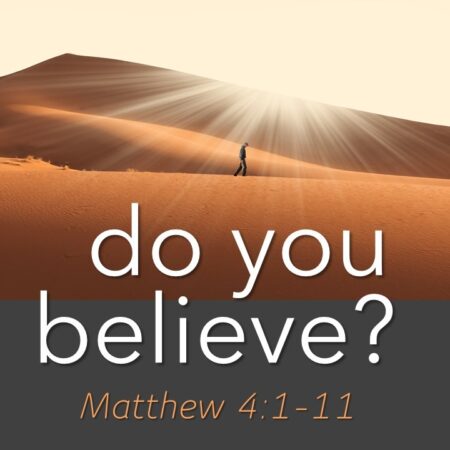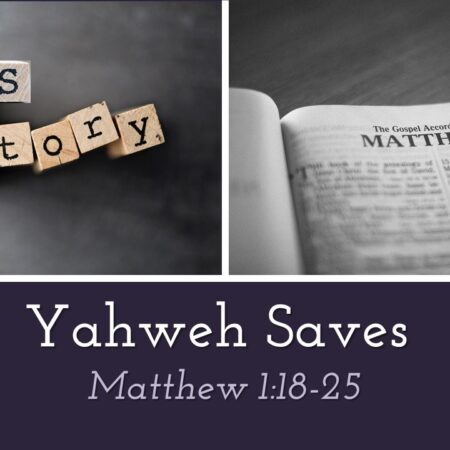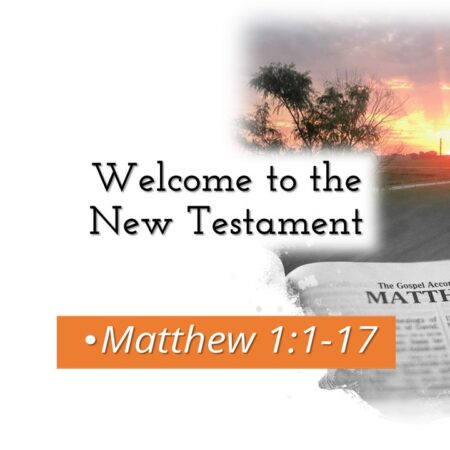Carmen Joy Imes in her book “Bearing God’s Name” writes:
“Matthew’s gospel breaks neatly into five blocks of teaching, mimicking the five books of the Torah (Genesis, Exodus, Leviticus, Numbers, Deuteronomy).
These five blocks of teaching are preceded by an introductory story in which Jesus’ life is in danger because King Herod, like Pharaoh, is killing Jewish babies. To escape, his parents take him to Egypt. It’s an inside-out Exodus story. When the coast is clear, they return to Palestine, retracting Israel’s journey from Egypt to the promised land. Next, we fast forward to Jesus’ adulthood, where he passes through the waters of baptism in the Jordan, reminding us of Israel’s crossing both the Red Sea and the Jordan.
After this, Jesus is sent by the Spirit into the wilderness for forty days, where he reenacts Israel’s wilderness wanderings.”
Baptism does not produce salvation in this text, Rather, it corresponds to something that does, THE DEATH OF JESUS (v 19) and the RESURRECTION (v 21)
“Baptism saves” if one makes a decision; a pledge of loyalty oath,
a public proclamation of who is on the Lord’s side in the cosmic war between good and evil.
Every Baptism is therefore a reiteration of the past and future doom of the Watchers in the wake of the gospel and the kingdom of God.
Early Christians understood the typology of this passage and its link back to 1 Enoch and Genesis 6:1-4.
This is why early baptismal formulas included a renunciation of Satan and his angels. Baptism was anything but routine. It was a symbol of spiritual warfare.” Dr. Michael Heiser “Reversing Hermon”
Who is Azazel?
We find the Biblical text in Leviticus 16:7-10
“And Aaron shall take the two goats, and he shall present them before Yahweh at the tent of assembly’s entrance. Then Aaron shall cast lots for the two goats: one lot for Yahweh and one for Azazel. And Aaron shall present the goat on which the lot for Yahweh fell, and he shall sacrifice it as a sin offering. But the must present alive before Yahweh the goat on which the lot for Azazel fell to make atonement for himself, to send it away into the desert to Azazel.”
R.T. France
“His Father is testing him in the school of privation, and his triumphant rebuttal of the devil’s suggestions will ensure that the filial bond can survive in spite of the conflict that lies ahead.”
Dr. Michael Heiser in the “Unseen Realm” makes this comment about that temptation:
“Had Jesus given in, it would have been an acknowledgment that Satan’s permission was needed to possess the nations. It wasn’t. Satan presumed power and ownership of something that, ultimately, was not his but God’s. The messaging behind Jesus’ answer is clear: Yahweh will take the nations back by his own means in his own time. He doesn’t need them to be given away in a bargain. Jesus was loyal to his Father.”
"Torah" Tagged Sermons
Biblical scholars have long ago arranged Matthews Gospel into five main sections, which they point out correspond with the five books of Moses, also known as the TORAH. The Jewish people call the entire Old Testament THE TANACH. All five main sections refer to Jesus’ teachings:
Section One: SERMON ON THE MOUNT 5-7)
Section Two: JESUS PERFORMS MIRACLES AND SENDS HIS DISCIPLES (8-10)
Section Three: PARABLES ABOUT THE KINGDOM (13)
Section Four: HOW GREATNESS WORKS IN THE KINGDOM (18)
Section Five: JUDGMENT IN THE KINGDOM TO COME (24-25)
Matthew simply states WHO JESUS IS and NOW YOU HAVE TO WRESTLE THROUGH THE IMPLICATIONS YOURSELF. Matthew is fully convinced that presenting Jesus this way to us, we will get to know Jesus and also get to know who we are.
In the Hebrew text the words used to describe the earth are TOHU and BOHU.
IN THE PHYSICAL REALM MEANS: without form and void or chaotic.
IN THE SPIRITUAL REALM MEANS: that which is nonfunctional and unproductive
John Walton in his book: “The Lost World of Genesis One” writes:
“In the Old Testament God has no needs and focuses functionality around people. Consequently, functionality cannot exist without people in the picture.
In Genesis people are not put in place until day six, but functionality is established with their needs and situation in mind.
This conclusion is further supported by the meaning of the repeated formula “it was good,” which I propose refers to “functioning properly”.
Such a conclusion is not arbitrary but based on the context.
Throughout Genesis 1 any number of possible meanings have been proposed for “good”. In the history of interpretation, it has often been understood in MORAL/ETHICAL terms or as a reference to the QUALITY OF WORKMANSHIP.
While the Hebrew term could be used in any of those ways, the context indicates a different direction. We can find out what the author means when saying all of these things are “good” by inquiring what it would mean for something NOT TO BE GOOD.
Fortunately, the near context offers us just such an opportunity: “It is not good for the man to be alone” (Genesis 2:18)
This has nothing to do with moral perfection or quality of workmanship – IT IS A COMMENT CONCERNING FUNCTION.
The human condition is not functionally complete without the women. Thus, throughout Genesis 1 the refrain “it was good”, expressed the functional readiness of the cosmos for human beings. Readers were assured that all functions were operating well and in accord with God’s purposes and directions.”
Matthew 1:1-17 Matthew 5:17 1. Matthew STARTS IN GENESIS 2. Matthew HIGHLIGHTS OLD TESTAMENT SCANDALS 3. Matthew INCLUDES THE PSALMS 4. Matthew INCLUDES THE PROPHETS Amos 3:7 Luke 24:19-27 5.…



